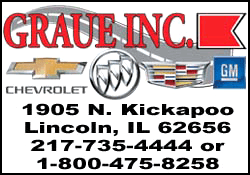|
Rubik's Cube loses EU
trademark fight over its shape
 Send a link to a friend
Send a link to a friend
 [November 10, 2016]
By Foo Yun Chee [November 10, 2016]
By Foo Yun Chee
BRUSSELS
(Reuters) - Rubik's Cube, a multicolored three-dimensional puzzle, lost
a trademark battle on Thursday after Europe's top court said its shape
was not sufficient to grant it protection against copycats.
The toy, invented in 1974 by Hungarian Erno Rubik, is popular among
young and old, with more than 350 million cubes sold worldwide.
British company Seven Towers, which manages Rubik's Cube intellectual
property rights, registered its shape as a three-dimensional EU
trademark with the European Union Intellectual Property Office (EUIPO)
in 1999.
But German toy maker Simba Toys challenged the trademark protection in
2006, saying that the cube's rotating capability should be protected by
a patent and not a trademark.
Patents allow inventors to block rivals from making commercial use of
their inventions without their approval for a certain period of time
while trademarks give intellectual property owners' an exclusive and
perpetual right to their designs, logos, phrases or words as long as
they use them.
The German company took its case to the Luxembourg-based European Union
Court of Justice (ECJ) after EUIPO and a lower EU court dismissed its
lawsuit.

ECJ judges agreed with Simba Toys' arguments. Their decision is final
and cannot be appealed.
"In examining whether registration ought to be refused on the ground
that shape involved a technical solution, EUIPO and the General Court
should also have taken into account non-visible functional elements
represented by that shape, such as its rotating capability," they said.
EUIPO will now have to issue a new decision based on the ECJ judgment.
3D OBJECTS
Apart from logos and brand names, three dimensional (3D) objects can
also be trademarked, such as the design of Nestle's <NESN.S> Perrier
bottles or the color of Duracell <BRKa.N> batteries.
Rubik's Brand Ltd's president David Kremer said he was baffled that the
court ruled that functionality or a technical solution is implicit in
the trademark.
"This judgment sets a damaging precedent for companies wishing to
innovate and create strong brands and distinctive marks within the EU,
and is not what European lawmakers intended when they legislated for 3D
trademarks," he said.
[to top of second column] |

A competitor solves a Rubik's cube using one hand during the Rubik's
Cube European Championship in Prague, Czech Republic, July 17, 2016.
REUTERS/David W Cerny

Litigation over trademarks on three dimensional objects have repeatedly
been escalated to Europe's top court.
Last year, the court ruled that Nestle's request to trademark the shape
of its four-fingered Kit Kat bar in Britain did not comply with EU law,
supporting a complaint by rival Mondelez International.
In 2014, however, the court said the layout of a shop such as Apple's <AAPL.O>
flagship stores may be registered as a trade mark under certain
conditions.
Lawyer Alex Brodie at London-based Gowling WLG said the Rubik's Cube
ruling could be a wake-up call for toy makers.
"The greater impact is likely to be on the toy and game industry who
will be considering their portfolio of 3D trade mark registrations to
assess how viable those registrations are," he said.
(Reporting by Foo Yun Chee and Robert-Jan Bartunek; Editing by Tom
Heneghan)
[© 2016 Thomson Reuters. All rights
reserved.] Copyright 2016 Reuters. All rights reserved. This material may not be published,
broadcast, rewritten or redistributed.

 |